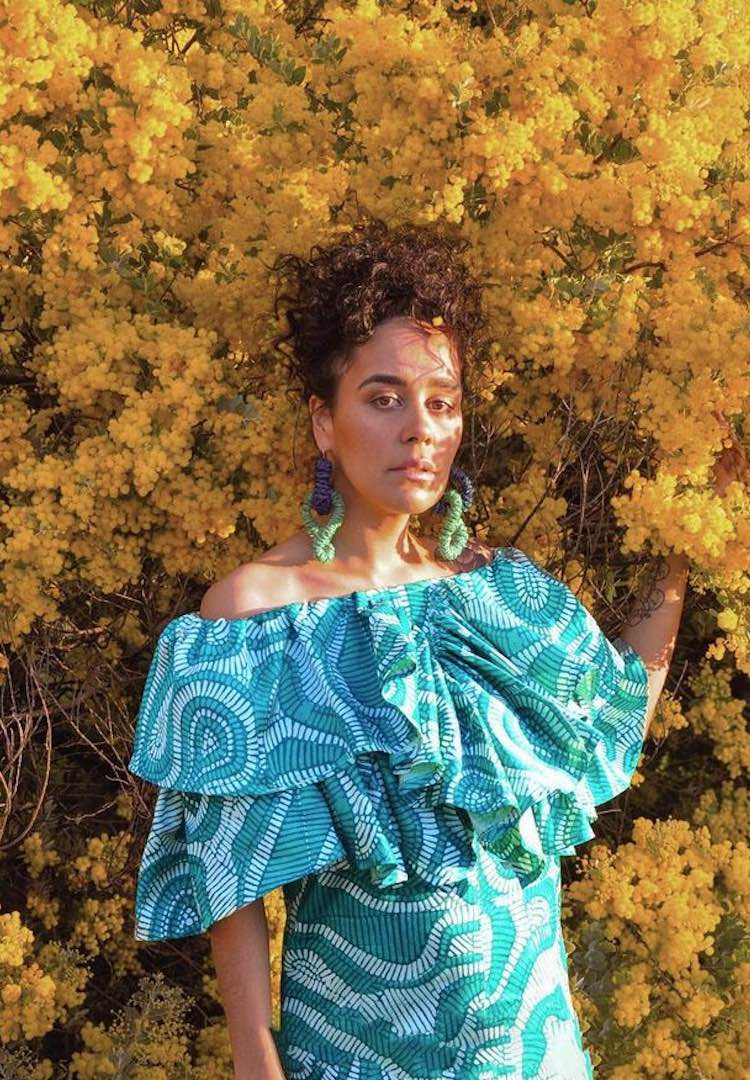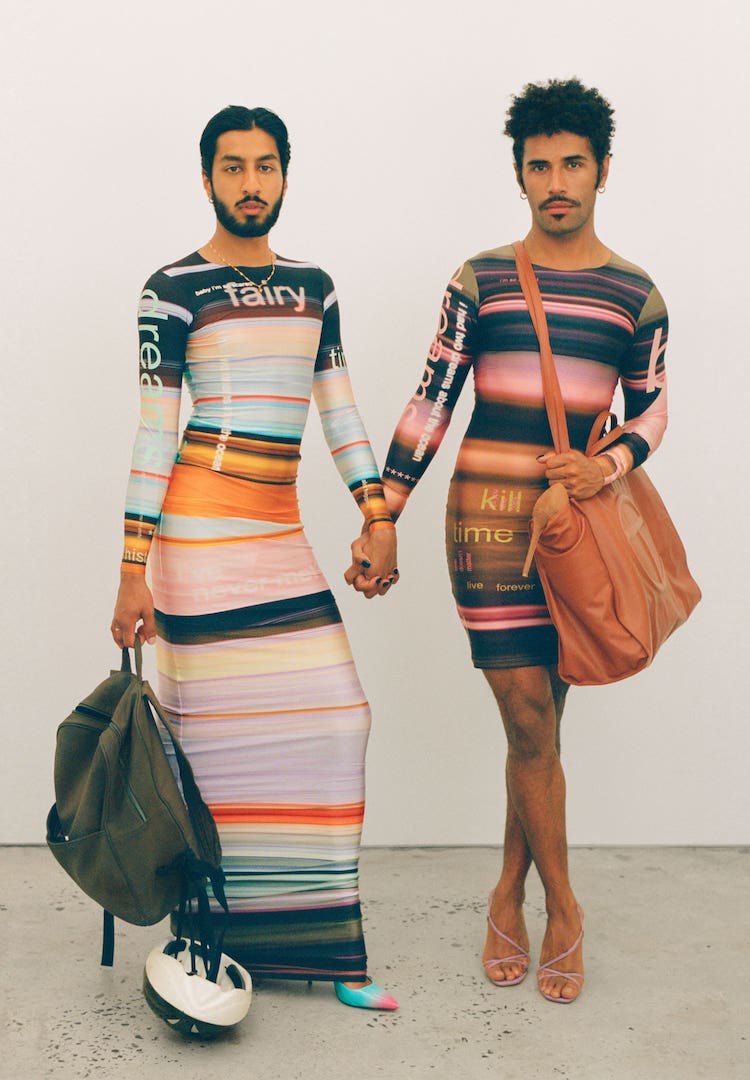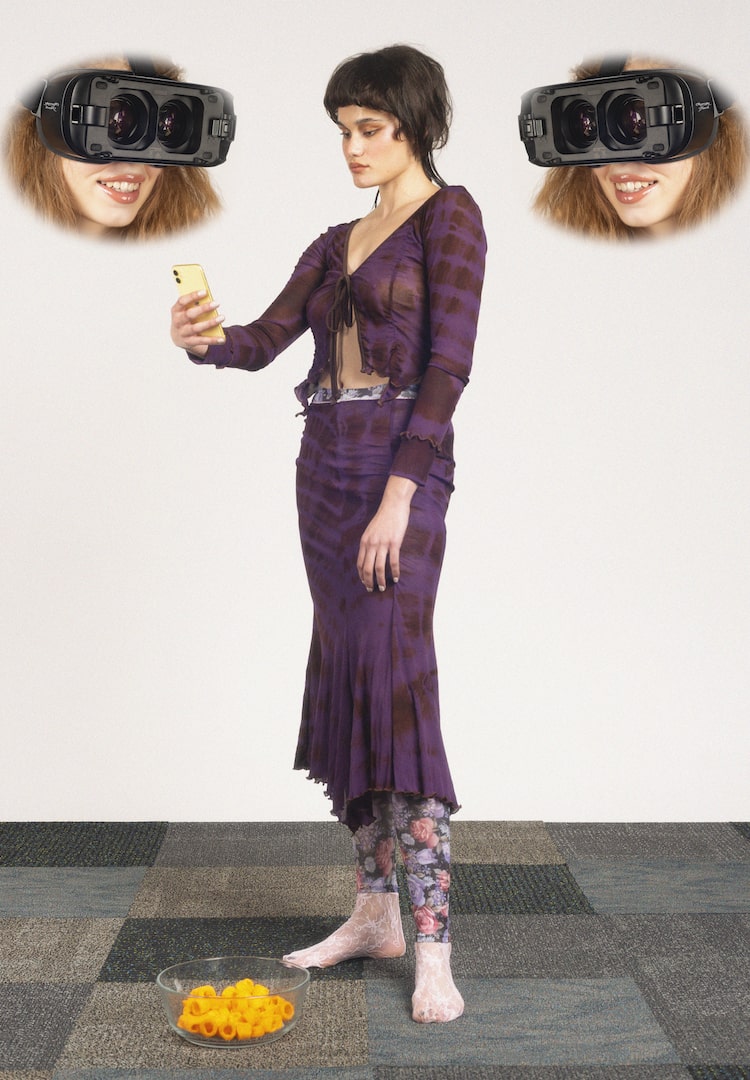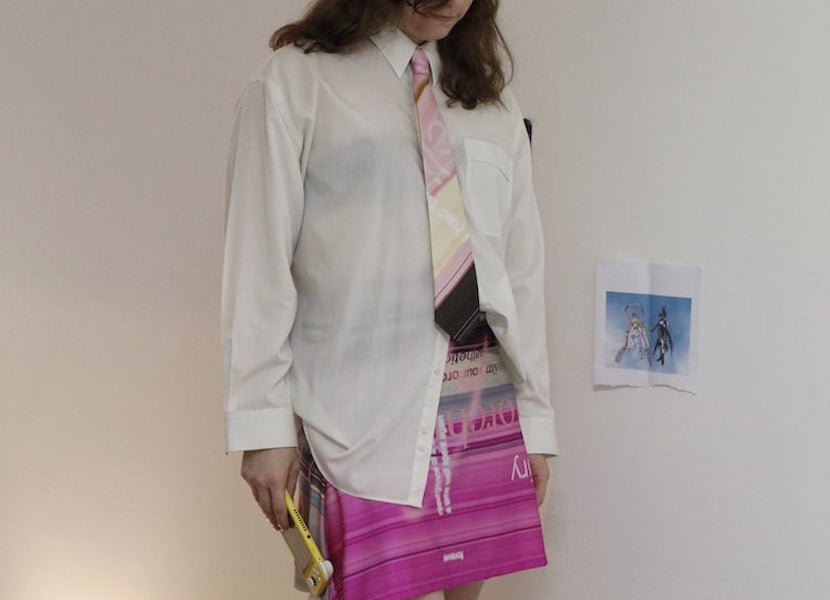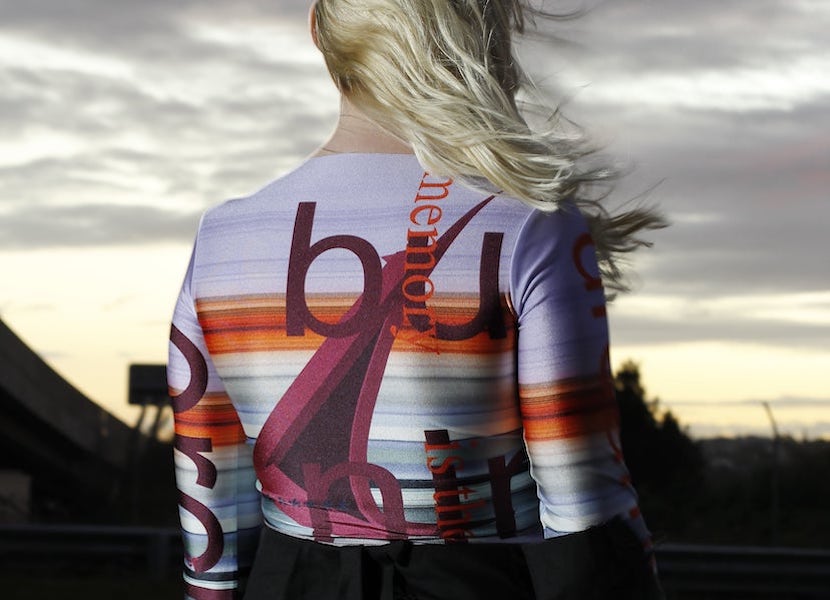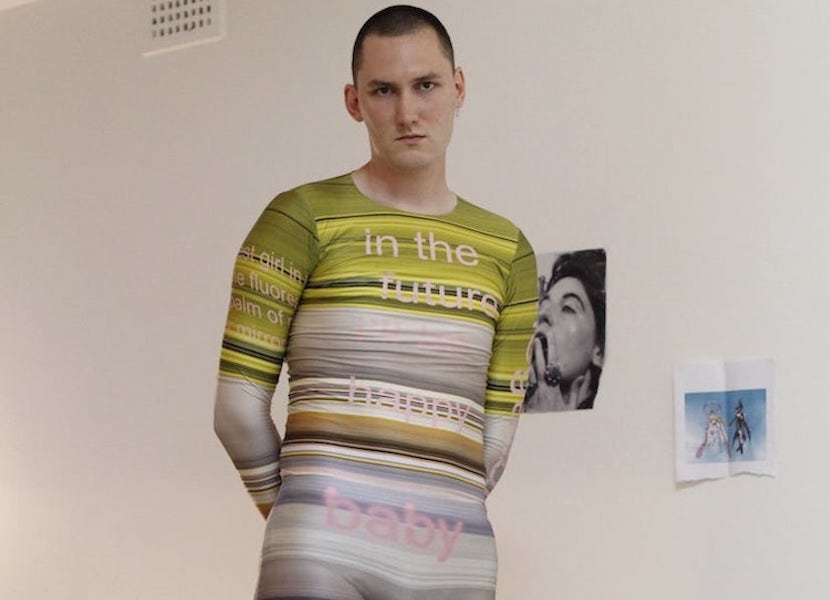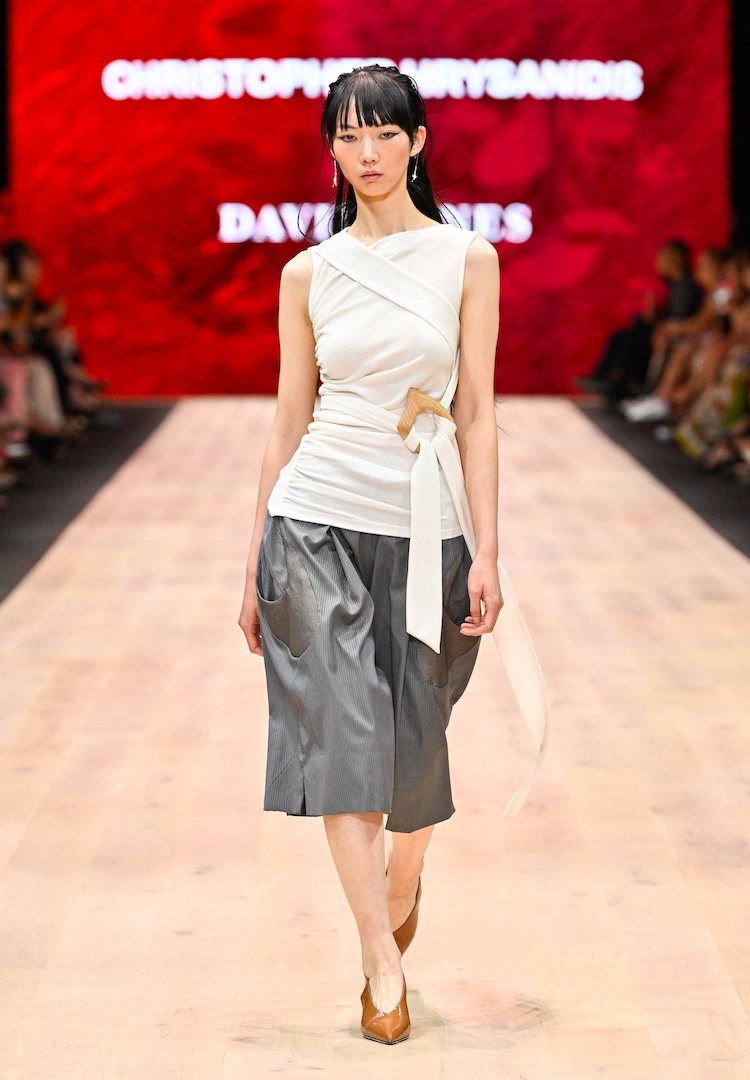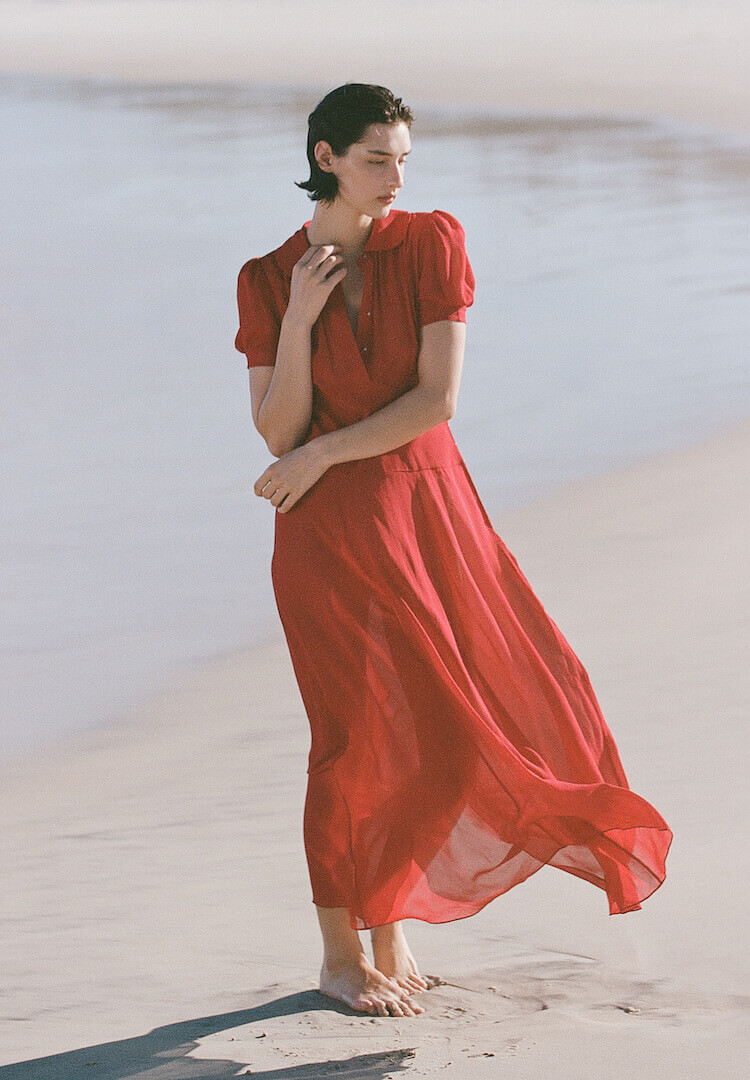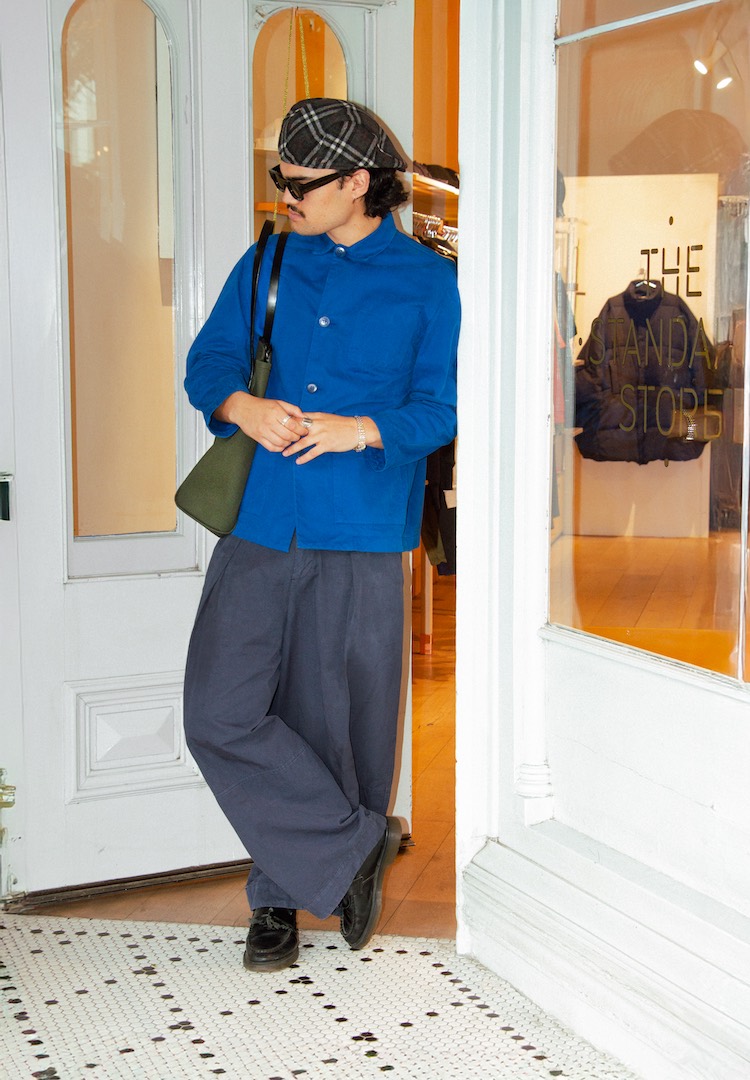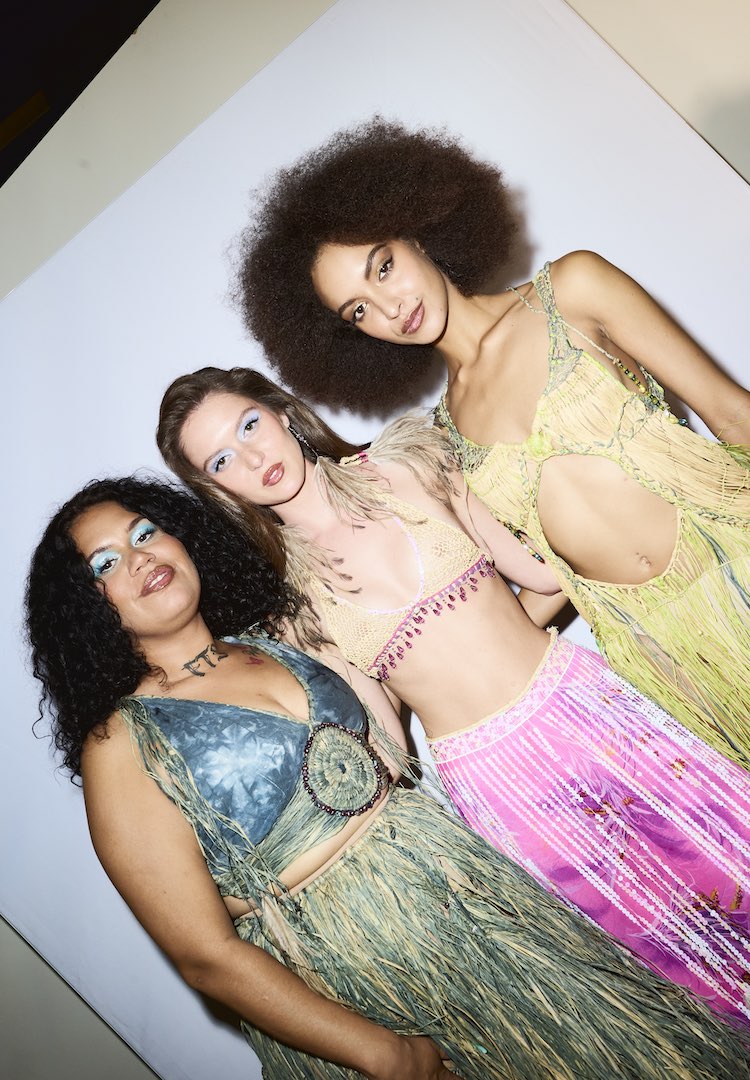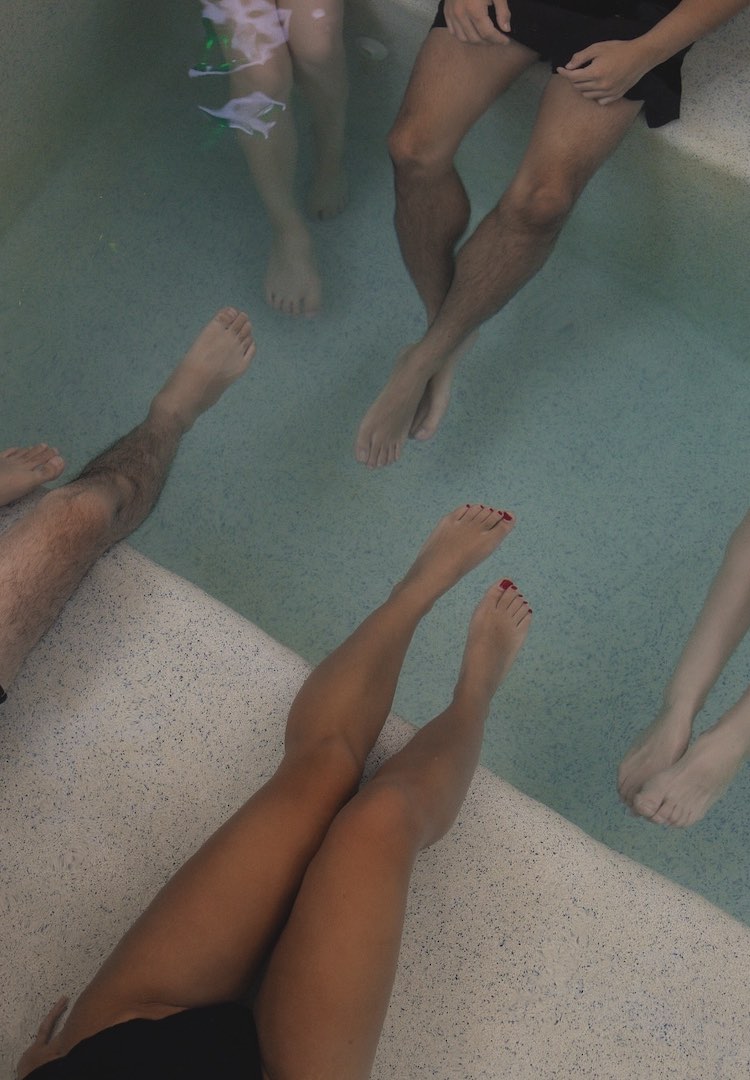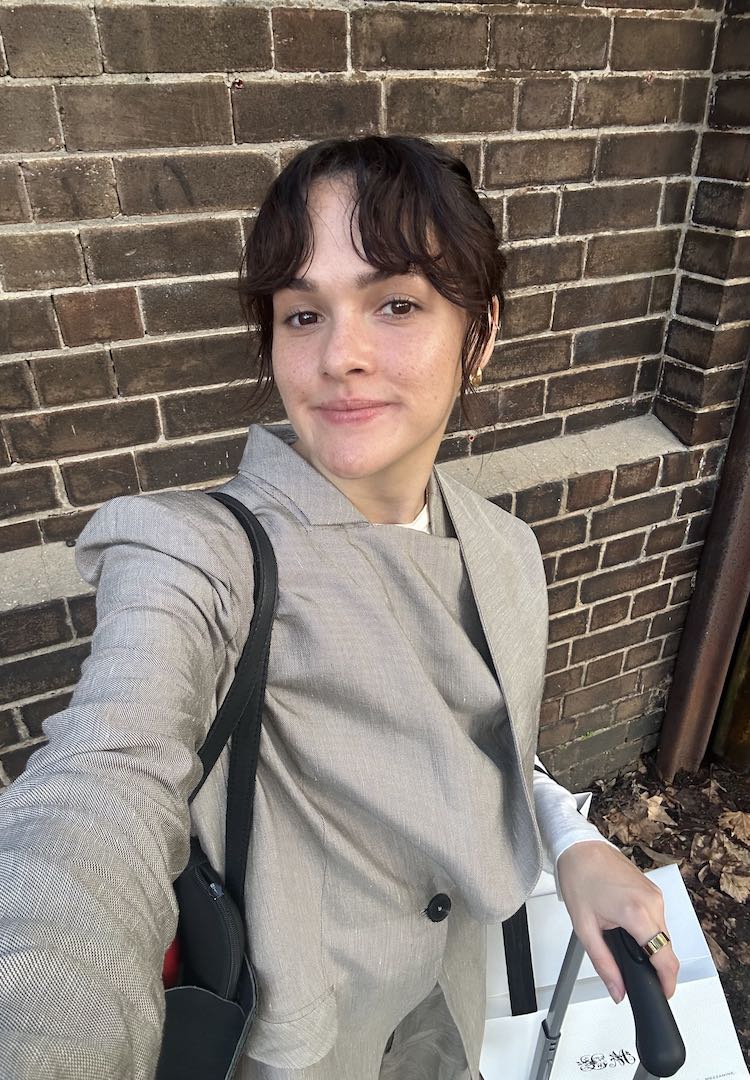Australian designer Alix Higgins is making poetry fit for the dancefloor
PHOTOGRAPHY BY JOE BRENNAN AND DANIEL HARDEN
WORDS BY HANNAH COHEN
“It’s about confidence, more than feeling sexy.”
Originally from the small town of Otford in New South Wales, designer Alix Higgins has fine-tuned the balance between bold hues and bare-all fabrics to channel a strength in vulnerability that pulsates through his entire range.
A proud Tumblr kid who convinced his parents that fashion was a vibrant mode of storytelling he wanted to pursue seriously, Alix got his start studying at the University of Technology Sydney (UTS).
For more fashion news, shoots, articles and features, head to our Fashion section.
Now working as a lecturer at UTS, a textile designer and a musician, Alix is an unnervingly talented jack of all trades. What started out as a line of scarves has morphed into the designer’s eponymous label and a collection of garments that walk the delicate line between party outfits and poetry.
The skin-tight garments feature sunset colourways adorned with the designer’s very own prose, giving figure-hugging club-wear a sentimental twist. With a focus on the multiplicity of identity, Alix hopes that wearers of his clothes will find their own meaning in his designs, with each piece featuring a unique set of typography for the customer to explore, whether that’s through taking bedroom mirror selfies or lighting up the dancefloor in his hypnotic pieces.
Hey Alix! Talk to me a little about your journey into the fashion sphere.
I don’t know what really drew me to [fashion] when I was younger, but the thing that really solidified it was definitely the internet. I went to high school in the Shire. I had a lot of friends that weren’t really all interested in the same things, so fashion was something that I became interested in, through other people through the internet, and like blogging and Tumblr in particular.
Being able to kind of speak with people in New York and in London and in Melbourne and Brisbane and other parts of the world that were also interested in this world, but not a part of it just yet, gave me a drive beyond my exact experience at the time. I think the internet really swept me up in a good way because it really drove me to push myself.
You told What Else that you were a Tumblr kid growing up. Does that experience translate into your garments?
For sure! I was really obsessed with Tumblr, it was sort of like this other world for me and for a lot of people my age. It really introduced me to a lot of people that I’m still in contact with now. One of the things that I found really important from things that I learned from Tumblr was the way that people would write about and document their own identity, particularly gender identity.
It was just like the first time that I saw people really making themselves who they are and kind of blurring the lines between ‘this is a mood board of cool stuff that I like’ versus ‘this is actually who I am and who I want to be.’ So that’s inspired my design practice. I just want to create things that are for my friends and for me while also kind of extending my identity and pushing that out into the world. Putting poetry and writings and statements and explorations of who I am onto garments that people will go clubbing in is kind of fun.
View this post on Instagram
How did you end up studying at Institut Français de la Mode (IFM) and what were the most important takeaways from your time there?
It’s a really amazing, sort of weird school. When I went there, it was really small and took 10 fashion students each year from around the world to do their masters. I was one of two Australians in my class… they really select people who aren’t similar whatsoever… so then because of that, there’s no competition or anything. It’s really just you being yourself which was really amazing. It also challenged my design perspective a lot in that way. IFM is also a real business school in a sense… being commercial is such a dirty word in fashion and people really don’t want to be commercial.
But I think it was really important for me to learn and [it] really opened my eyes to what branding is and the importance of tapping into your own identity and making that a brand. Before [IFM] I hadn’t really considered that in such concrete ways. I had a clear idea of who I was, but not about turning that into something that people can actually access and be a part of.
How would you describe your label and the impact you want to make with your clothes?
Last year, during the lockdown, is when I made my first garment that was for sale… the majority of my existence as a brand has been during COVID and during lockdown. So a lot of the imagery that people send me or the way that I see people wearing their garments is like in their bedrooms, taking selfies. Really weirdly, that was sort of like from Tumblr, which was the beginning of when I was interested in fashion. It was like these people all around the world, creating these almost fashion shoots in their bedrooms and using selfies as a way of accessing the fashion world and pretending to be a part of it.
Now, my brand is kind of facilitating people doing that and having the same relationship with the internet. There’s only been a few months recently, in Sydney at least, where clubs were open, and people were going out and I was running into people wearing my work and that’s really amazing. It’s really weird because three or four years ago, that wasn’t really my goal at all. My real goal was editorial and making sculptural pieces and having them shot in magazines. I’m still working on that, but to see people actually want to spend their own money and buy these things to wear them, it’s really special to me.
Your designs definitely make a statement with your use of nylon and bold colours with your iconic typography. What drew you to this style?
Colour is something I have always been obsessed with. I kind of have to have colour around me just to be happy. And also the way that I see fashion is really about fashion as an image, and I just wanted to create imagery on garments. I wanted to start with something quite pure in its shape which is why there are T-shirts, very simple figure-hugging, it is just your body and this image on top of that.
But at the same time, I’m working on the next collection [which includes] some pieces that are a bit more off the body, a bit more sculptural, and a bit easier to wear, knowing that not everyone wants to wear skin-tight nylon all the time, obviously. So adding more silks and things that are for a different range of people… it’s a very slow process and I don’t want to just make trash. I want each piece to be really considered.
View this post on Instagram
How do you want people to feel wearing your clothes?
It’s so funny, because a lot of people think it’s sexy and I don’t really intend that. But I’m also happy about however people feel, that’s great. But it’s very much about confidence and a kind of strength in vulnerability. Like the pieces say, ‘baby, I’m so scared.’ It sounds silly and cute, but it’s very emotional for me and at the same time, the prints and the garments are quite bold and ask a lot of confidence in someone. It’s about confidence, more than feeling sexy.
What inspires the text written on your garments?
I’ve always been writing for like 10 years or something… sort of talking about things that are happening in my life. Particularly to do with my identity and my personal experiences, but written in ways that are kind of cryptic and hidden and symbolic for myself. So there’s a lot of text or words in particular, that become symbols of the brand and symbols of my identity that mean something different to different people. So even things like ‘baby’ and ‘fairy’… are an exploration of identity. My brand’s writing is a little bit mystical and indecipherable, but I hope that it means something to people.
And the other thing that’s really important in the writing is that there are huge, single words that are really readable from across the room in a club or whatever. But then there’s lots of small parts of poetry hidden in the garments, that you would only see if you’re wearing the garment, and you look at it for a long time and you own and inspect it. I think that’s like a really special relationship that I get to have with my customers or friends or whoever wears the pieces.
View this post on Instagram
How do you think the fashion space is changing and how do you want to contribute to the shift?
I think it’s really hard because one of the things that happen to so many small brands, and young designer brands is getting copied by like, H&M or whoever. But I just think, there’s no way H&M could write the fucked up shit that I’ve done on a T-shirt, on their T-shirt, because they need to sell a million units. So, I kind of see being really vulnerable and being really personal as like a branding and a signature that nobody can really copy from you.
Maybe there could be a really commercial version, but I think it kind of protects you in a sense… a corporation can’t be this poetic, vulnerable, open thing that I can be at this point in my career, because it’s just me. I don’t have anybody standing over me and saying our sales were better last month so we have to cut the poetry or whatever, like it just doesn’t matter.
To check out Alix Higgins’ full range, head here.

